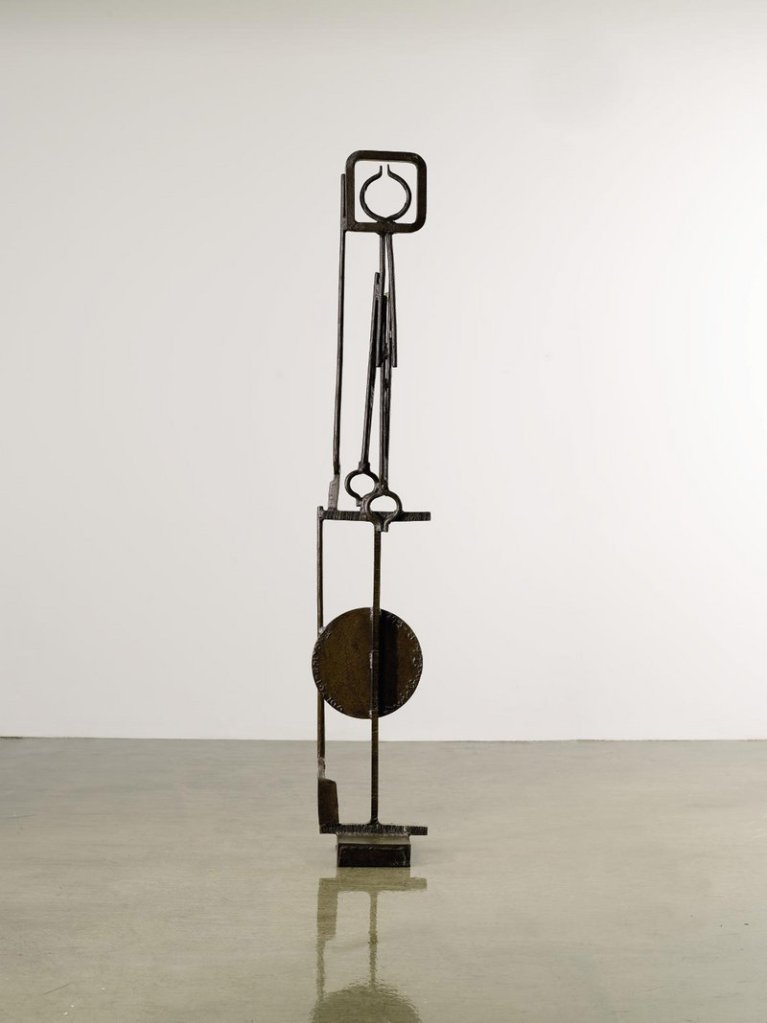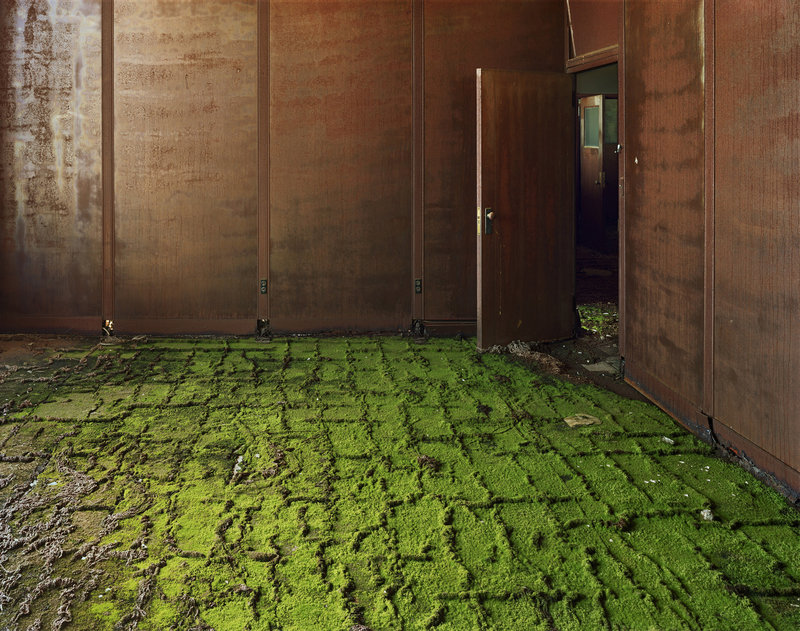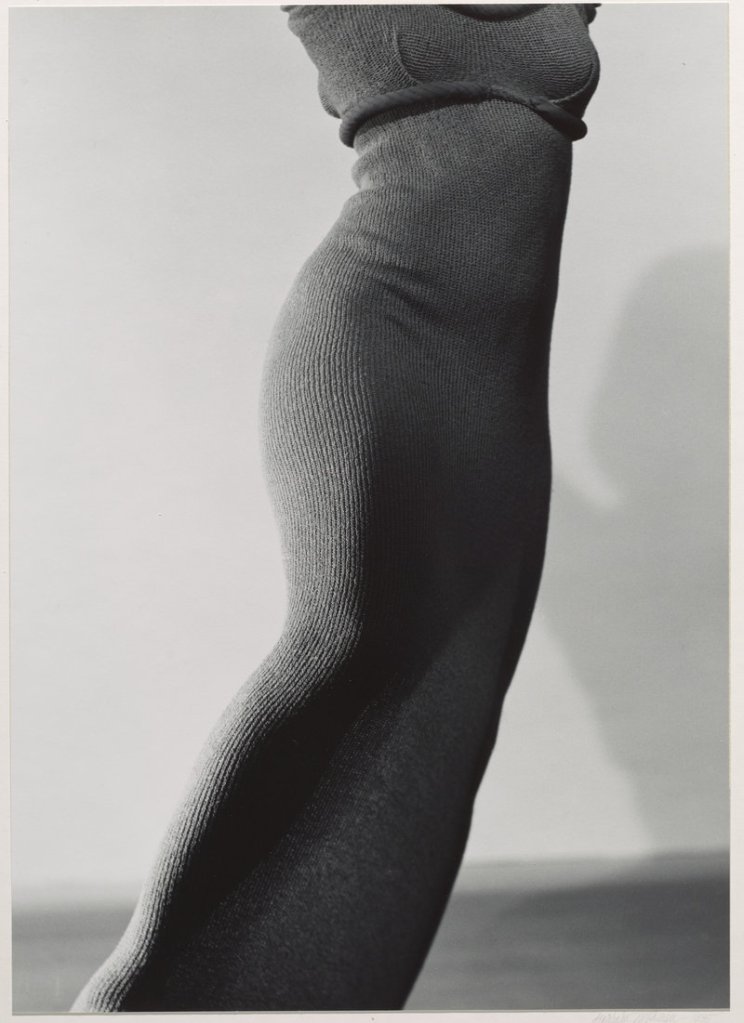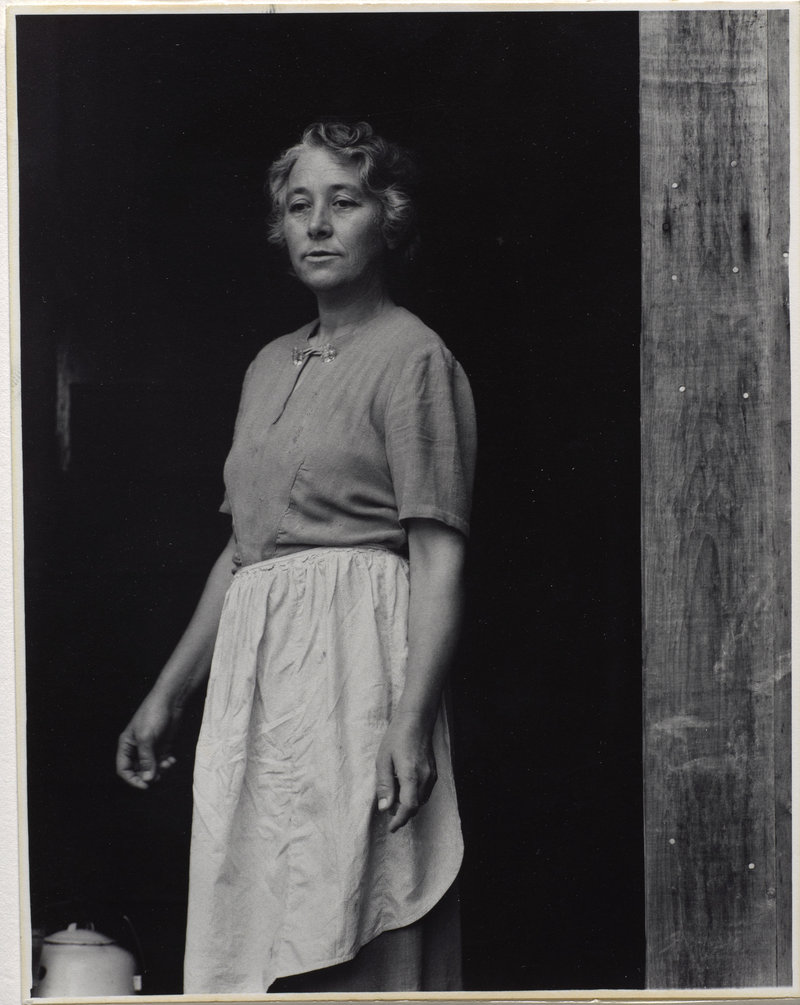The Colby College Museum of Art’s summer slate features 10 solid shows that range from a fascinatingly grim gem about elegies to one of the most significant and powerful photographic exhibitions on view in the nation. Now arranged by genre, even the permanent collection has a fresh curatorial face — as well as a few spectacular new additions.
Two of the new acquisitions are very significant. One is a major painting from 2010 that shows a view of NYC’s Columbus Circle at night by photo-realist master Richard Estes (a “New York” artist who quietly lives and paints for much of the year in Maine). It is full proof that the artist (now almost 80) is as strong as ever. With complex angles and reflections, Estes handles the sophisticated nighttime lighting of the city with adoringly crisp elegance.
The other piece just might be the most important sculpture in Maine. “Voltri Bolton II” is a 1962 masterpiece by America’s greatest 20th century sculptor, David Smith (1906-1965). It was newsworthy when it sold in a Sotheby’s auction just two months ago, so it was a stunning surprise to see it here. This alone is worth a visit to Colby.
“Voltri Bolton II” is a spare version of a person rendered by only 10 steel elements. The sculpture hails the great senses of economy and transformation achieved by Picasso, who is known for his pictures but was probably more influential as a sculptor. It also directly takes on — and indeed surpasses — Swiss master Alberto Giacometti (1901-1966). Best known for his tall, slender, bronze figures, Giacometti sought to inspire a physical encounter with the viewer that would invoke a fundamental sense of the human experience, namely that each of us is a vertical figure in a horizontal world. Yet when they are monolithically still, Giacometti’s figures often feel uncomfortably stiff. To add a sense of dynamism, he moved towards depicting his figures striding — which kills the spiritual (phenomenological) effect of the face-to-face encounter.
On the other hand, Smith’s figure has a clockwork logic that adds a pulse and sense of time that eluded Giacometti. The face and arms of “Voltri Bolton II” are re-purposed smithy tongs. The tiny extent to which one is askew as they hang over a steel circle adds the dynamic sense of a pendulum — a masterstroke by which the piece comes alive.
The flatness of the sculpture essentially forces a face-to-face experience. It’s a virtuoso spatial gesture that makes the sculpture feel like a person. Encounters with others, Smith insists, are not about profiles.
The seemingly simple “Voltri Bolton II” is a true masterpiece.
ABBOTT AND ADAMS, TO NAME A FEW
Colby’s great “American Modern” photography show (to be reviewed in August) just opened and is well-supported by a small show of big prints by Andrew Moore and a selection of modernist photos from the Norma B. Marin collection that was promised to Colby this last spring.
I particularly like Marin’s slender, vertical print of NYC by Bernice Abbott and an Ansel Adams portrait of Alfred Steiglitz (who, as a champion of John Marin, Marsden Hartley and so many of the great photographers and artists showcased in Maine this summer, is being re-cast as the not-so-unsung hero of American modernism and Maine art in particular). Barbara Morgan’s “Martha Graham Extasis,” however, blew me away. It’s a close-up of the dancer’s torso — from ankles to armpits — in a tight, knit dress. I can’t think of an image of a dancing body in motion that’s more interesting or appealing. The print, like every other one in the show, is spectacular (although Paul Strand’s 1945 portrait of Suzi Thompson from Cape Street, Maine deserves singular praise).
AND MUCH, MUCH MORE
There are several other excellent shows now at Colby. Some high points include Andrew Moore’s gorgeous prints of corporate demise, which offer a brilliant counter to the industrial utopia of “American Modern.” His 2009 image of the now vibrantly rich moss floors of the abandoned (and formerly swanky) headquarters of Ford Motor Company in Highland Park is deliriously gorgeous and surrealistically brilliant.
Also, Diantha Edwards’ 1859 memorial into which she embroidered the hair of 27 deceased and living family members is an uncanny zenith of a quirky, sweet and creepy little show about American elegies. “Inspired by Buddhism” is a terrific reminder of Colby’s extensive Asian art holdings.
And, of course, Colby has shows featuring the work of John Marin and Alex Katz, two of America’s greatest painters, who came to Maine after they matured in NYC.
This is a great year for art in Maine, and museum director Sharon Corwin is making a strong case that the Colby museum is one of the nation’s stars for American art.
Freelance writer Daniel Kany is an art historian who lives in Cumberland. He can be contacted at:
dankany@gmail.com
Send questions/comments to the editors.






Success. Please wait for the page to reload. If the page does not reload within 5 seconds, please refresh the page.
Enter your email and password to access comments.
Hi, to comment on stories you must . This profile is in addition to your subscription and website login.
Already have a commenting profile? .
Invalid username/password.
Please check your email to confirm and complete your registration.
Only subscribers are eligible to post comments. Please subscribe or login first for digital access. Here’s why.
Use the form below to reset your password. When you've submitted your account email, we will send an email with a reset code.